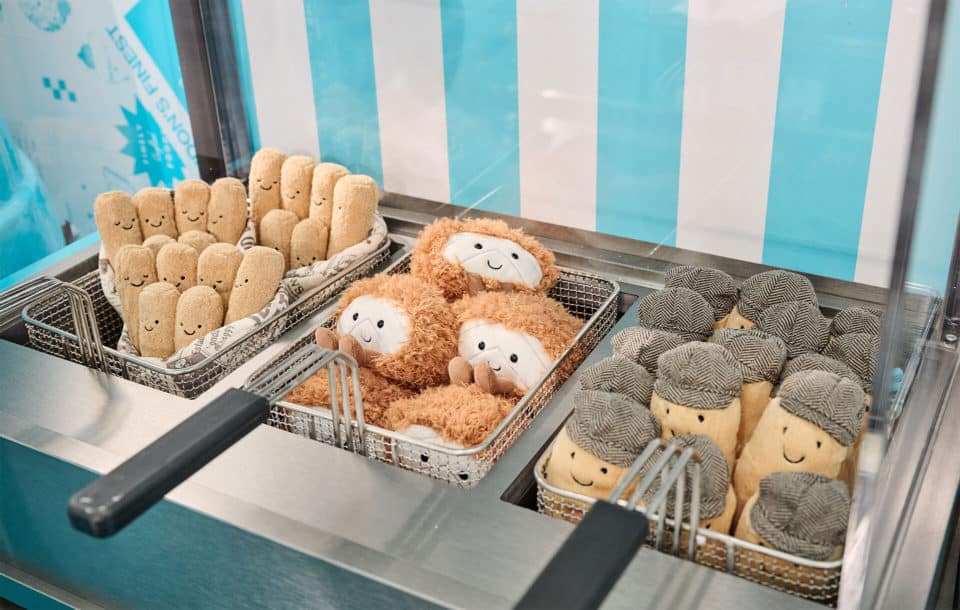In the bag: My Cloud Grocer on boosting groceries online basket sizes
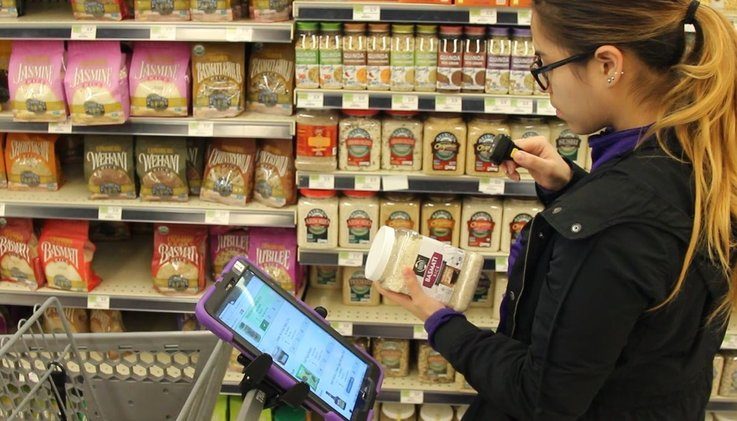
My Cloud Grocer is all about groceries. Described as the number one end-to-end ecommerce supermarket service provider in the US, the company’s platform has been built with one industry in mind. The results speak for themselves with industry-leading basket sizes and over $100 million in client sales.
Co-founder and CTO Yehuda Vernik talks us through the challenges of accurate data for thousands of product lines, achieving those basket sizes and why online grocery retail can actually boost in-store sales:
Can you explain what My Cloud Grocer does in your own words?
We help supermarkets start selling their merchandise online. Essentially, we put supermarkets online, whether that’s single locations or chains.

Why did you focus specifically on the grocery sector for the platform?
When we started five years ago, online buying and shipping was already very popular here in the United States and that sector was covered by small and big companies, such as Amazon. But the local deliveries were not covered at all, so we realised there was this open niche.
Also, in supermarkets there is an additional challenge. It’s not only about local deliveries and being present on the ground, but the challenge of selling perishables online. We decided to accept the challenge and create a platform that sells a lot of perishables together with packaged goods. For some of our clients produce and fresh meat are actually their top sellers.
What’s the reasoning behind that?
It takes two to tango. It takes a great store, great fulfillment, good management and it takes a good platform that helps and supports all that. Together all these parts of the puzzle build customer trust. Once that customer trust is in place then the online order basket size is growing. We have a proven record of very high online basket sizes. In a Brick Meets Click study, for two years in a row our clients scored top for basket size.
How is the platform achieving these basket sizes?
Naturally, we have to give full credit to the stores. In terms of the platform, it’s very user-friendly and intuitive. It’s driven by pictures. We built the platform four times from scratch in order to achieve the performance that we were hoping for. The platform is built specifically for groceries to support purchasing dozens of items in each order. Our average basket value is above $180, so customers have to be able to put a lot of items in the cart and it has to work fast and easy.
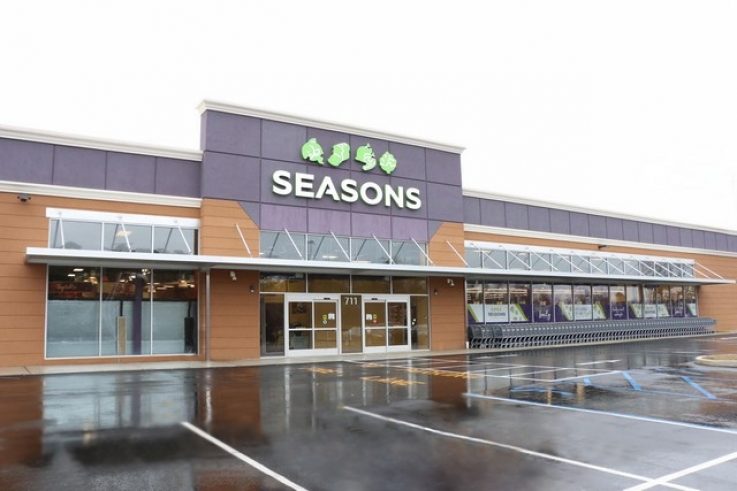
Are there any particularly interesting projects that you’ve worked on?
We’ve worked recently on onboarding a supermarket chain. With that project SKU numbers and codes were quite a challenge. When we started they even had different POS providers in different locations. So we inherited different codings throughout the locations. The same cucumber in different stores would have different codes.
Also, different POS providers do different things with the digits of the barcode. Some drop the first digit, some drop the last, some drop first and last and some don’t drop any. We had to unify and combine all the stores, so we had to come up with the way to recognise and detect the same products, even with different codes.
At the same time, each store had its own pricing for the same item and a separate stock level. Some products one store carries, but then temporarily discontinues, while the second store still has it and the third never carried it. But now when they receive that merchandise it’s already located in the right place on the website and the picture is already in place.
Another client, Seasons is the biggest kosher supermarket chain in the United States. They’ve already put online five of their 10 locations. We came up with this idea of having a membership, so for $99 dollars you get free local deliveries for a year, as long as you’re above the minimum spend, plus special pricing. They just launched it two months ago and their subscription base is growing dramatically. We had to create and enable this feature for them, but now it’s part of our platform.
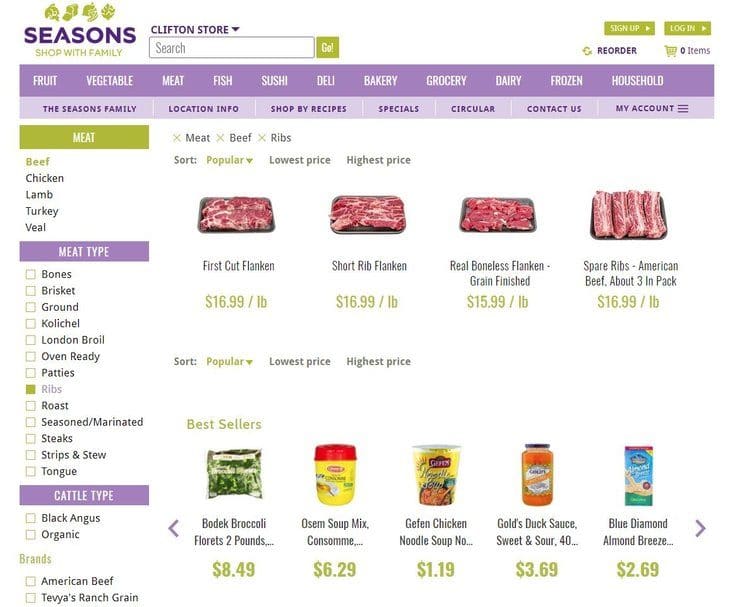
How is your platform helping to drive an increase in in-store sales as well?
We see that time and again – a better online presence drives better brand recognition for the store. It creates a buzz in the neighbourhood and the store sends around branded delivery vans, which increases the visibility of the store. If people see that other people are using it, it creates an impression that everyone is using it. The more they see it the more people are interested to visit the store or use the online service.
There is also this concept of webrooming where people look up prices online in order to pick which store they go to. A lot of stores have specials which they usually advertise in printed circulars, but these can only fit a certain number of items on the pages. Online you are not limited by space, so you can have dozens and dozens of good special offers. When people go online they can see what is on special in any category, or for their particular dietary requirements. It creates a lot of transparency and customers embrace that.
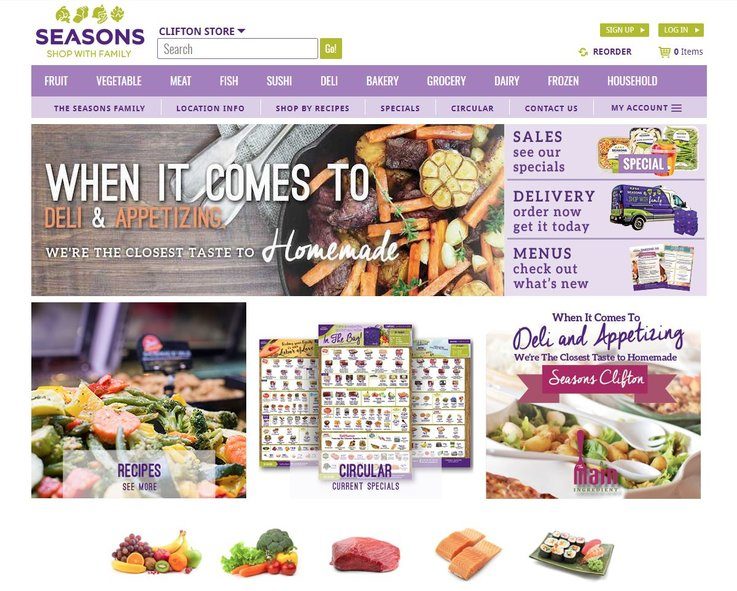
What other elements of the platform are there?
One feature is our shop-by-recipe module. Most of our clients choose to use it as it’s a very simple feature for the customer to use. They browse the library of recipes by category and they select the recipe they like, which lists all the ingredients, instructions and has a beautiful picture. If they want to cook that recipe they click the shop-by-recipe button and it takes them to a list of ingredients. Each ingredient has a whole range of options for them to pick between, so they can choose their preferred flour for example. If the recipe asks for whole wheat flour then the choices will only be whole wheat flour. Each option is listed by order of popularity – we keep a popularity rating for each item sold online – so if customers don’t know what to choose they can be confident that they’ll be ok with the most popular items.
An important part of our offering is taking pictures of all of the items in the store. It’s our policy that we don’t put any item online without a picture. Our platform is very visual. That’s a big part of our success because we believe people are not likely to buy anything without a picture, even if it’s a popular item that they know what it looks like. If you start missing pictures the website looks like it’s under construction, rather than a finished product.
The fulfillment module is a very important part of our platform. If you are a customer and place an order for a hundred dollars, you expect all of the items to arrive. You don’t expect half of your items to be marked as unavailable. We have a mechanism of self clean-up of the website and removing items that are not in the stock. This is a challenge for supermarkets, even managers don’t necessarily know their in-stock numbers.
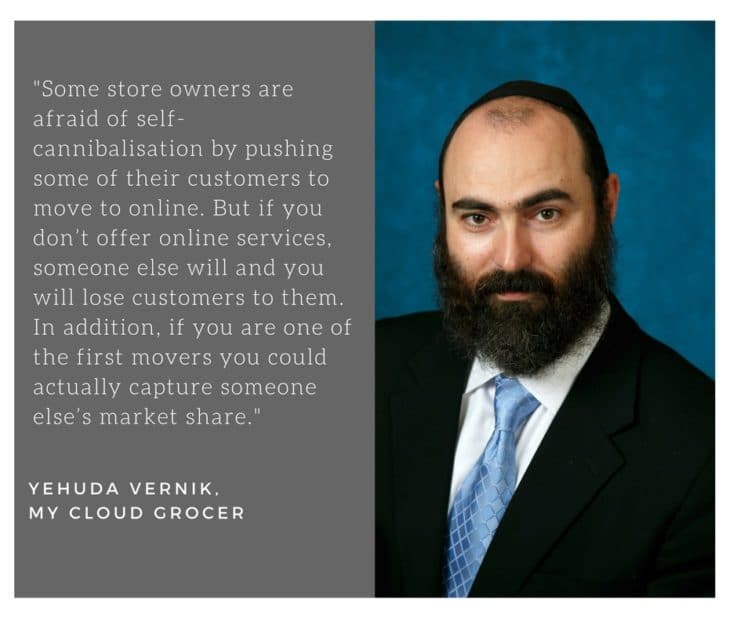
What are some of the biggest challenges you face on a normal project?
A typical store starts with 10,000 SKU’s and some go up to 35,000 SKU’s or even more. It’s very dynamic. We have to do pricing updates and input new products a few times a day.
One of the challenges is having clean data. Many stores don’t even have full description of all the items they carry, because the product name is never facing the customer. Shoppers just pick up products from the shelf, take it to the register and you print the whole list on the receipt. The receipt is usually very narrow. So many stores make a very abbreviated description of all the items, not a full description in the way you would present it on the website.
Each item should also be assigned to a specific category for the online store, which is not necessarily the same as you would do it in-store. Typically in the store they have just one level of category – they have produce, but not the subcategory apples or tomatoes. But for online you have to have those. Some pieces of data need to be corrected and some are just missing, so the challenge is to make sure all the products are presented in a good way.

Is there anything that you think is unique about the US market when it comes to grocery shopping?
Geographic scarcity is one consideration. So far we have worked with suburban and urban stores which service compact populations. We do enable some of our clients to deliver as far as two hours away for loyal customers. That couldn’t have happened before they started their online offerings. That’s one of the ways that online shopping is having an impact on existing sales.
Some store owners are afraid of self-cannibalisation by pushing some of their customers to move to online. But if you don’t offer online services, someone else will and you will lose customers to them. In addition, if you are one of the first movers you could actually capture someone else’s market share.
Overall grocery sales are not growing. In the United States, they actually shrink by one percent year-on-year. But online grocery sales are growing by 25 percent. How do you explain that? It’s companies with online grocery shopping eating away at the market share of their neighbours.
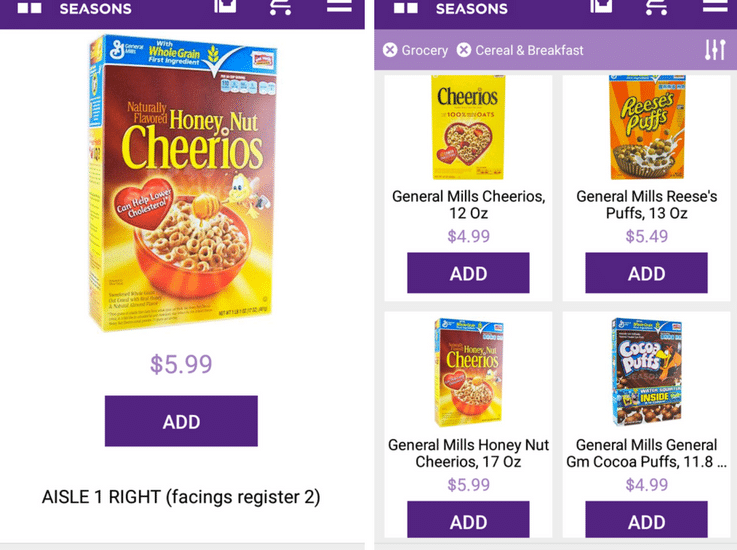
What do you think still needs to be addressed in online grocery retail?
I think a very important direction is personalisation, which allows stores to make custom offerings for each customer. The more data that is being accumulated and the more information the store has about the customer the more you can upsell. Let’s say you have a special on meat this week, but this customer is a vegan – you’re not going to push that special to them. You’re going to push something else.
It should be based on the customers shopping history, and what people with similar shopping habits like. It’s a very similar concept to Netflix, which recommends movies based on your renting history, but also considers recommendations of other customers with similar preferences.
What are your future plans for My Cloud Grocer?
We will continue to dive deeper into personalisation, which we already have some good elements of.
Ongoing platform improvement is a must. We will deliver great new features to our website and app users.
We are planning to expand beyond U.S. market as well as offer our services to other retail verticals like pharmacies and health food stores.
Images courtesy of My Cloud Grocer
What are the 50 best retail tech startups? Find out in our round-up. Plus, find out more about the latest trends in retail by taking part in one of our Insider Trends retail safaris.



